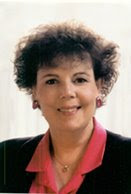Admit
it. When it comes to your sewing machine feet, you really only use a few of
your favorites.
The
¼” piecing foot, your walking foot and your quilting foot. You may have some
specialty feet that came with your machine, and while you think they're nice,
but you really don't use them.
The
more you know about sewing machine feet, the better your sewing projects will
turn out. However, if you are like most people, you will figure them out
through trial and error and what fun it that? Let's look at some of the most
popular sewing machine feet, but before we get started, we should take a brief
look at some other stuff, too.
* Viking (Huskvarna) and Pfaff are European made usually with snap-on feet.
* Most Japanese machines are snap-on (i.e. Brother).
* All Berninas need a low shank adaptor and use generic low shank feet.
* Singer Slant is for Singer slant machines only. (All other Singers have snap-on or screw on feet.)
* All Featherweights use low shank feet. They are center needle position machines.
* For super high-bar lever-style Kenmore, use a High-bar adaptor.
What is a Shank and Why is
it Attached to My Foot?
Think about your foot. It is attached to your leg at the ankle and has
the ability to flex up and down. On your sewing machine, the shank is the leg to
which the presser foot is attached. For many older machines, changing a foot
involves unscrewing the foot's shank and screwing on the shank with the desired
foot.
There
are three types of shanks of which you should be aware; High, Short and
Slanted. Specific sewing machine brands will have a specific type of shank. If
in doubt, check your manual or with your local machine dealer.





























